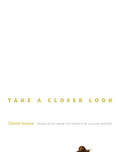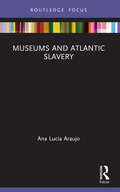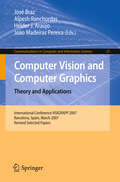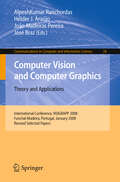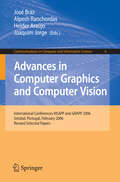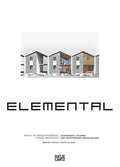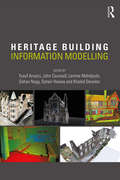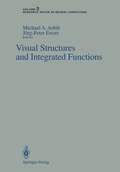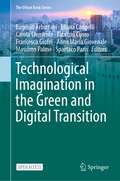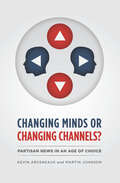- Table View
- List View
Take a Closer Look
by Daniel Arasse Alyson WatersWhat happens when we look at a painting? What do we think about? What do we imagine? How can we explain, even to ourselves, what we see or think we see? And how can art historians interpret with any seriousness what they observe? In six engaging, short narrative "fictions," each richly illustrated in color, Daniel Arasse, one of the most brilliant art historians of our time, cleverly and gracefully guides readers through a variety of adventures in seeing, from Velázquez to Titian, Bruegel to Tintoretto. By demonstrating that we don't really see what these paintings are trying to show us, Arasse makes it clear that we need to take a closer look. In chapters that each have a different form, including a letter, an interview, and an animated conversation with a colleague, the book explores how these pictures teach us about ways of seeing across the centuries. In the process, Arasse freshly lays bare the dazzling power of painting. Fast-paced and full of humor as well as insight, this is a book for anyone who cares about really looking at, seeing, and understanding paintings.
Take a Closer Look
by Daniel Arasse Alyson WatersWhat happens when we look at a painting? What do we think about? What do we imagine? How can we explain, even to ourselves, what we see or think we see? And how can art historians interpret with any seriousness what they observe? In six engaging, short narrative "fictions," each richly illustrated in color, Daniel Arasse, one of the most brilliant art historians of our time, cleverly and gracefully guides readers through a variety of adventures in seeing, from Velázquez to Titian, Bruegel to Tintoretto. By demonstrating that we don't really see what these paintings are trying to show us, Arasse makes it clear that we need to take a closer look. In chapters that each have a different form, including a letter, an interview, and an animated conversation with a colleague, the book explores how these pictures teach us about ways of seeing across the centuries. In the process, Arasse freshly lays bare the dazzling power of painting. Fast-paced and full of humor as well as insight, this is a book for anyone who cares about really looking at, seeing, and understanding paintings.
Morphological Regionalization: Strengthening the Conzenian Method (The Urban Book Series)
by Muzaffer Ali AratThis book is about how to make the method of morphological regionalization, proposed in the early 1960s, more useful and practicable for planning, urban design and architecture. This book is about cities; more precisely, about how cities can be characterized based on the main elements of urban form. It provides a systematic way of description and explanation of the historico-geographical structure of the urban landscape. It offers a step-by-step methodology for the identification of morphological regions as a key tool for planning practice and townscape management. The book is divided in seven parts. The first part is the introduction, motivation, research goal and objectives, and the structure of the book. The second part of the book offers an overview of urban morphology, urban morphological approaches, the concept of morphological region and its past applications worldwide. The third part is the methodological procedures for the implementation of this morphological approach to cities. The fourth and fifth parts are the implementation of this methodology into two case studies, Istanbul and Antequera. The sixth part offers a discussion of results. And, finally, the seventh part is constituted by a set of conclusions.
Museums and Atlantic Slavery (Museums in Focus)
by Ana Lucia AraujoMuseums and Atlantic Slavery explores how slavery, the Atlantic slave trade, and enslaved people are represented through words, visual images, artifacts, and audiovisual materials in museums in Europe and the Americas. Divided into four chapters, the book addresses four recurrent themes: wealth and luxury; victimhood and victimization; resistance and rebellion; and resilience and achievement. Considering the roles of various social actors who have contributed to the introduction of slavery in the museum in the last thirty years, the analysis draws on selected exhibitions, and institutions entirely dedicated to slavery, as well as national, community, plantation, and house museums in the United States, England, France, and Brazil. Engaging with literature from a range of disciplines, including history, anthropology, sociology, art history, tourism and museum studies, Araujo provides an overview of a topic that has not yet been adequately discussed and analysed within the museum studies field. Museums and Atlantic Slavery encourages scholars, students, and museum professionals to critically engage with representations of slavery in museums. The book will help readers to recognize how depictions of human bondage in museums and exhibitions often fail to challenge racism and white supremacy inherited from the period of slavery.
Museums and Atlantic Slavery (Museums in Focus)
by Ana Lucia AraujoMuseums and Atlantic Slavery explores how slavery, the Atlantic slave trade, and enslaved people are represented through words, visual images, artifacts, and audiovisual materials in museums in Europe and the Americas. Divided into four chapters, the book addresses four recurrent themes: wealth and luxury; victimhood and victimization; resistance and rebellion; and resilience and achievement. Considering the roles of various social actors who have contributed to the introduction of slavery in the museum in the last thirty years, the analysis draws on selected exhibitions, and institutions entirely dedicated to slavery, as well as national, community, plantation, and house museums in the United States, England, France, and Brazil. Engaging with literature from a range of disciplines, including history, anthropology, sociology, art history, tourism and museum studies, Araujo provides an overview of a topic that has not yet been adequately discussed and analysed within the museum studies field. Museums and Atlantic Slavery encourages scholars, students, and museum professionals to critically engage with representations of slavery in museums. The book will help readers to recognize how depictions of human bondage in museums and exhibitions often fail to challenge racism and white supremacy inherited from the period of slavery.
Pattern Recognition and Image Analysis: 4th Iberian Conference, IbPRIA 2009 Póvoa de Varzim, Portugal, June 10-12, 2009 Proceedings (Lecture Notes in Computer Science #5524)
by Hélder J. Araújo Ana Maria Mendonça Armando J. Pinho María Inés Torres BarañanoThis volume constitutes the refereed proceedings of the 4th Iberian Conference on Pattern Recognition and Image Analysis, IbPRIA 2009, held in Póvoa de Varzim, Portugal in June 2009. The 33 revised full papers and 29 revised poster papers presented together with 3 invited talks were carefully reviewed and selected from 106 submissions. The papers are organized in topical sections on computer vision, image analysis and processing, as well as pattern recognition.
Computer Vision and Computer Graphics. Theory and Applications: International Conference VISIGRAPP 2007, Barcelona, Spain, March 8-11, 2007, Revised Selected Papers (Communications in Computer and Information Science #21)
by Hélder J. Araújo Joao Madeiras Pereira José Braz AlpeshKumar RanchordasThis book includes selected papers from VISIGRAPP 2007, the Joint Conference on Computer Vision and Computer Graphics, comprising two component conferences, namely, the International Conference on Computer Vision Theory and Applications (VISAPP) and the International Conference on Computer Graphics Theory and App- cations (GRAPP), held in Barcelona, Spain, during March 8–11, 2007. We received quite a high number of paper submissions: 382 in total for both conf- ences. We had contributions from more than 50 countries in all five continents. This confirms the success and global dimension of these jointly organized conferences. After a rigorous double-blind evaluation method, a total of 78 submissions were accepted as full papers. From those, 18 got selected for inclusion in this book. To ensure the sci- tific quality of the contributions, these were selected from papers that were evaluated with the highest scores by the VISIGRAPP Program Committee members and then they were extended and revised by the authors. Special thanks go to all contributors and re- rees, without whom this book would not have been possible. VISIGRAPP 2007 included four invited keynote lectures, presented by internati- ally recognized researchers. The presentations represented an important contribution to increasing the overall quality of the conference. We would like to express our - preciation to all invited keynote speakers, in alphabetical order: Jake K. Aggarwal (The University of Texas at Austin/USA), André Gagalowicz (INRIA/France), Wo- gang Heidrich (University of British Columbia/Canada), Mel Slater (Universitat Politècnica de Catalunya/Spain).
Computer Vision and Computer Graphics - Theory and Applications: International Conference, VISIGRAPP 2008, Funchal-Madeira, Portugal, January 22-25, 2008. Revised Selected Papers (Communications in Computer and Information Science #24)
by Hélder J. Araújo Joao Madeiras Pereira José Braz AlpeshKumar RanchordasINSTICC organized the third edition of VISIGRAPP that took place in Funchal- Madeira, Portugal in January 2008 after successful previous editions. This book - cludes selected papers from VISIGRAPP 2008, the Joint Conference on Computer Vision Theory and Applications (VISAPP) and Computer Graphics Theory and - plications (GRAPP). The conference was intended to stimulate the exchange of ideas on the topics of c- puter vision and computer graphics. We received a high number of paper submissions: 374 in total for both conferences. We had contributions from more than 50 countries in all continents. This confirms the success and global dimension of these jointly organized conferences. After a rigorous double-blind evaluation method, 78 submissions were accepted as full papers. From those, 20 were selected for this book. To ensure the sci- tific quality of the contributions, these were selected from the ones that were evaluated with the highest scores by the VISIGRAPP Program Committee Members and then they were extended and revised by the authors. Special thanks go to all contributors and re- rees, without whom this book would not have been possible. VISIGRAPP 2008 also featured the comments of keynote speakers, in alphabetical order, Adrian Hilton (University of Surrey, UK), Geneviève Lucet (Computer S- vices for Research at the UNAM, Mexico), Peter Sturm (INRIA Rhône-Alpes, France) and Sharathchandra Pankanti (IBM - Exploratory Computer Vision Group, USA), who are internationally recognized researchers. The presentations represented an - portant contribution to the overall quality of the conference.
Advances in Computer Graphics and Computer Vision: International Conferences VISAPP and GRAPP 2006, Setúbal, Portugal, February 25-28, 2006, Revised Selected Papers (Communications in Computer and Information Science #4)
by Helder Araújo Joaquim Jorge José Braz Alpesh RanchordasThis book includes selected papers of the VISAPP and GRAPP International Conferences 2006, held in Funchal, Madeira, Portugal, February 25-28, 2006. The 27 revised full papers presented were carefully reviewed and selected from 314 submissions. The topics include geometry and modeling, rendering, animation and simulation, interactive environments, image formation and processing, image analysis, image understanding, motion, tracking and stereo vision.
Elemental: Incremental Housing and Participatory Design Manual
by Alejandro Aravena Andrés IacobelliWhat began as an academic initiative to improve the quality of life of the poor strata of the population has now become a professional “do tank” offering services that cover the entire spectrum of urban development. The celebrated Chilean architect, winner of the 2016 Pritzker Prize and Director of the 2016 Venice Architecture Biennale, Alejandro Aravena (born 1967) founded Elemental in 2001 in his hometown with the goal of alleviating social deprivation directly instead of hoping for a balance of income relations. Besides building public facilities and public housing, Elemental also develops new approaches for the reorganization of resources and the potential of cities by means of projects devoted to infrastructure and transportation. This volume, first published in 2013 and now back in print, documents the social activity and history of the international architectural team and sheds light on its financing strategies, for example through participatory building.
Elemental
by Alejandro Aravena Andrés IacobelliWhat began as an academic initiative to improve the quality of life of poor strata of the population has meanwhile become a professional “do tank” offering services that cover the entire spectrum of urban development. Alejandro Aravena (*1967 in Santiago de Chile) founded Elemental in 2001 in his hometown with the goal of alleviating social deprivation directly instead of hoping for a balance of income relations. Besides building public facilities and public housing, Elemental also develops new approaches for the reorganization of resources and the potential of cities by means of projects devoted to infrastructure and transportation. This publication documents the social activity and history of the international architectural team and sheds light on its financing strategies, for example through participative building. 15th International Architecture Exhibition, Venice, May 28–November 27, 2016
Heritage Building Information Modelling
by Yusuf Arayici John Counsell Lamine Mahdjoubi Gehan Ahmed Nagy Soheir Hawas Khaled DweidarBuilding Information Modelling (BIM) is being debated, tested and implemented wherever you look across the built environment sector. This book is about Heritage Building Information Modelling (HBIM), which necessarily differs from the commonplace applications of BIM to new construction. Where BIM is being used, the focus is still very much on design and construction. However, its use as an operational and management tool for existing buildings, particularly heritage buildings, is lagging behind. The first of its kind, this book aims to clearly define the scope for HBIM and present cutting-edge research findings alongside international case studies, before outlining challenges for the future of HBIM research and practice. After an extensive introduction to HBIM, the core themes of the book are arranged into four parts: Restoration philosophies in practice Data capture and visualisation for maintenance and repair Building performance Stakeholder engagement This book will be a key reference for built environment practitioners, researchers, academics and students engaged in BIM, HBIM, building energy modelling, building surveying, facilities management and heritage conservation more widely.
Heritage Building Information Modelling
by Yusuf Arayici John Counsell Lamine Mahdjoubi Gehan Ahmed Nagy Soheir Hawas Khaled DweidarBuilding Information Modelling (BIM) is being debated, tested and implemented wherever you look across the built environment sector. This book is about Heritage Building Information Modelling (HBIM), which necessarily differs from the commonplace applications of BIM to new construction. Where BIM is being used, the focus is still very much on design and construction. However, its use as an operational and management tool for existing buildings, particularly heritage buildings, is lagging behind. The first of its kind, this book aims to clearly define the scope for HBIM and present cutting-edge research findings alongside international case studies, before outlining challenges for the future of HBIM research and practice. After an extensive introduction to HBIM, the core themes of the book are arranged into four parts: Restoration philosophies in practice Data capture and visualisation for maintenance and repair Building performance Stakeholder engagement This book will be a key reference for built environment practitioners, researchers, academics and students engaged in BIM, HBIM, building energy modelling, building surveying, facilities management and heritage conservation more widely.
Uncertainty for Safe Utilization of Machine Learning in Medical Imaging, and Graphs in Biomedical Image Analysis: Second International Workshop, UNSURE 2020, and Third International Workshop, GRAIL 2020, Held in Conjunction with MICCAI 2020, Lima, Peru, October 8, 2020, Proceedings (Lecture Notes in Computer Science #12443)
by Tal Arbel Enzo Ferrante Sarah Parisot Aristeidis Sotiras Adrian Dalca Bartlomiej Papiez William M. Wells Ryutaro Tanno Carole H. Sudre Hamid Fehri Christian F. Baumgartner Koen Van LeemputThis book constitutes the refereed proceedings of the Second International Workshop on Uncertainty for Safe Utilization of Machine Learning in Medical Imaging, UNSURE 2020, and the Third International Workshop on Graphs in Biomedical Image Analysis, GRAIL 2020, held in conjunction with MICCAI 2020, in Lima, Peru, in October 2020. The workshops were held virtually due to the COVID-19 pandemic.For UNSURE 2020, 10 papers from 18 submissions were accepted for publication. They focus on developing awareness and encouraging research in the field of uncertainty modelling to enable safe implementation of machine learning tools in the clinical world. GRAIL 2020 accepted 10 papers from the 12 submissions received. The workshop aims to bring together scientists that use and develop graph-based models for the analysis of biomedical images and to encourage the exploration of graph-based models for difficult clinical problems within a variety of biomedical imaging contexts.
When Brains Meet Buildings
by Michael A. ArbibAfter decades of research on minds and brains and a decade of conversations with architects, Michael Arbib presents When Brains Meet Buildings as an invitation to the science behind architecture, richly illustrated with buildings both famous and domestic. As he converses with the reader, he presents action-oriented perception, memory, and imagination as well as atmosphere, aesthetics, and emotion as keys to analyzing the experience and design of architecture. He also explores what it might mean for buildings to have "brains" and illuminates all this with an appreciation of the biological and cultural evolution that supports the diverse modes of human living that we know today. These conversations will not only raise the level of interaction between architecture and neuroscience but, by explaining the world of each group to the other, will also engage all readers who share a fascination with both the brains within them and the buildings around them. Michael Arbib is a pioneer in the interdisciplinary study of computers and brains and has long studied brain mechanisms underlying the visual control of action. His expertise makes him a unique authority on the intersection of architecture and neuroscience.
When Brains Meet Buildings
by Michael A. ArbibAfter decades of research on minds and brains and a decade of conversations with architects, Michael Arbib presents When Brains Meet Buildings as an invitation to the science behind architecture, richly illustrated with buildings both famous and domestic. As he converses with the reader, he presents action-oriented perception, memory, and imagination as well as atmosphere, aesthetics, and emotion as keys to analyzing the experience and design of architecture. He also explores what it might mean for buildings to have "brains" and illuminates all this with an appreciation of the biological and cultural evolution that supports the diverse modes of human living that we know today. These conversations will not only raise the level of interaction between architecture and neuroscience but, by explaining the world of each group to the other, will also engage all readers who share a fascination with both the brains within them and the buildings around them. Michael Arbib is a pioneer in the interdisciplinary study of computers and brains and has long studied brain mechanisms underlying the visual control of action. His expertise makes him a unique authority on the intersection of architecture and neuroscience.
Visual Structures and Integrated Functions (Research Notes in Neural Computing #3)
by Michael A. Arbib Jörg-Peter EwertThis volume integrates theory and experiment to place the study of vision within the context of the action systems which use visual information. This theme is developed by stressing: (a) The importance of situating anyone part of the brain in the context of its interactions with other parts of the brain in subserving animal behavior. The title of this volume emphasizes that visual function is to be be viewed in the context of the integrated functions of the organism. (b) Both the intrinsic interest of frog and toad as animals in which to study the neural mechanisms of visuomotor coordination, and the importance of comparative studies with other organisms so that we may learn from an analysis of both similarities and differences. The present volume thus supplements our studies of frog and toad with papers on salamander, bird and reptile, turtle, rat, gerbil, rabbit, and monkey. (c) Perhaps most distinctively, the interaction between theory and experiment.
Technological Imagination in the Green and Digital Transition (The Urban Book Series)
by Eugenio Arbizzani Eliana Cangelli Carola Clemente Fabrizio Cumo Francesca Giofrè Anna Maria Giovenale Massimo Palme Spartaco ParisThis open access book addresses the pressing need for sustainability in urban development and the use of technology, with cities to serve as the main stage for strategies that seek to meet the targets and the cross-sector priorities indicated in the EU’s Next Generation program, all in pursuit of a solid recovery on the part of the European economy, along lines of ecological transition, digitalization, competitiveness, training, and inclusion to overcome social, territorial, and gender differences.The international study encounter is meant to promote visions shared by architectural technology and other disciplines, which, though they may appear to differ, are closely interconnected, with the aim of achieving an open, interdisciplinary integration capable of proposing concrete projects regarding topics held to be of strategic importance to the future of the built environment. These are identified to draw up evolving scenarios of architecture and cities suited to reflection, at various levels, on innovative models of process and product.
City of Play: An Architectural and Urban History of Recreation and Leisure
by Rodrigo Pérez ArceCity of Play shows how play is built into the very fabric of the modern city. From playgrounds to theme parks, skittle alleys to swimming pools, to the countless uncontrolled spaces which the urban habitat affords – play is by no means just a childhood affair. A myriad essentially unproductive playful pursuits have, through time, modelled the modern city and landscape. Architect and scholar Rodrigo Pérez de Arce's erudite, original, and often surprising study explores a curiously neglected dimension of architectural design and practice: ludic space. It is an architectural history of the playground – from the hippodrome to the Situationist city – of space released from productive ends in the pursuit of leisure. But this is more than just a book about how architecture has incorporated play into its spaces and structures, it is a history of the modern city itself. The ludic imagination impregnated modernist ideals, and what begins with the playground ends with a re-consideration of the whole sweep of the modern movement through the filter of leisure and play.Because play is such a basic or fundamental human experience, the book re-grounds the architect's concerns with those of non-architects – and not only those of adults but also of children. It seeks to give everyone – architects and other ordinary city-dwellers alike – a better understanding about what is at stake in the making of the public spaces of our cities.
City of Play: An Architectural and Urban History of Recreation and Leisure
by Rodrigo Pérez ArceCity of Play shows how play is built into the very fabric of the modern city. From playgrounds to theme parks, skittle alleys to swimming pools, to the countless uncontrolled spaces which the urban habitat affords – play is by no means just a childhood affair. A myriad essentially unproductive playful pursuits have, through time, modelled the modern city and landscape. Architect and scholar Rodrigo Pérez de Arce's erudite, original, and often surprising study explores a curiously neglected dimension of architectural design and practice: ludic space. It is an architectural history of the playground – from the hippodrome to the Situationist city – of space released from productive ends in the pursuit of leisure. But this is more than just a book about how architecture has incorporated play into its spaces and structures, it is a history of the modern city itself. The ludic imagination impregnated modernist ideals, and what begins with the playground ends with a re-consideration of the whole sweep of the modern movement through the filter of leisure and play.Because play is such a basic or fundamental human experience, the book re-grounds the architect's concerns with those of non-architects – and not only those of adults but also of children. It seeks to give everyone – architects and other ordinary city-dwellers alike – a better understanding about what is at stake in the making of the public spaces of our cities.
Visual Form 2001: 4th International Workshop on Visual Form, IWVF-4 Capri, Italy, May 28-30, 2001 Proceedings (Lecture Notes in Computer Science #2059)
by Carlo Arcelli Luigi P. Cordella Gabriella Sanniti Di BajaThis book constitutes the refereed proceedings of the 4th International Workshop on Visual Form, IWVF-4, held in Capri, Italy, in May 2001.The 66 revised full papers presented together with seven invited papers were carefully reviewed and selected from 117 submissions. The book covers theoretical and applicative aspects of visual form processing. The papers are organized in topical sections on representation, analysis, recognition, modelling and retrieval, and applications.
Changing Minds or Changing Channels?: Partisan News in an Age of Choice (Chicago Studies in American Politics)
by Kevin Arceneaux Martin JohnsonWe live in an age of media saturation, where with a few clicks of the remote—or mouse—we can tune in to programming where the facts fit our ideological predispositions. But what are the political consequences of this vast landscape of media choice? Partisan news has been roundly castigated for reinforcing prior beliefs and contributing to the highly polarized political environment we have today, but there is little evidence to support this claim, and much of what we know about the impact of news media come from studies that were conducted at a time when viewers chose from among six channels rather than scores. Through a series of innovative experiments, Kevin Arceneaux and Martin Johnson show that such criticism is unfounded. Americans who watch cable news are already polarized, and their exposure to partisan programming of their choice has little influence on their political positions. In fact, the opposite is true: viewers become more polarized when forced to watch programming that opposes their beliefs. A much more troubling consequence of the ever-expanding media environment, the authors show, is that it has allowed people to tune out the news: the four top-rated partisan news programs draw a mere three percent of the total number of people watching television. Overturning much of the conventional wisdom, Changing Minds or Changing Channels? demonstrate that the strong effects of media exposure found in past research are simply not applicable in today’s more saturated media landscape.
Changing Minds or Changing Channels?: Partisan News in an Age of Choice (Chicago Studies in American Politics)
by Kevin Arceneaux Martin JohnsonWe live in an age of media saturation, where with a few clicks of the remote—or mouse—we can tune in to programming where the facts fit our ideological predispositions. But what are the political consequences of this vast landscape of media choice? Partisan news has been roundly castigated for reinforcing prior beliefs and contributing to the highly polarized political environment we have today, but there is little evidence to support this claim, and much of what we know about the impact of news media come from studies that were conducted at a time when viewers chose from among six channels rather than scores. Through a series of innovative experiments, Kevin Arceneaux and Martin Johnson show that such criticism is unfounded. Americans who watch cable news are already polarized, and their exposure to partisan programming of their choice has little influence on their political positions. In fact, the opposite is true: viewers become more polarized when forced to watch programming that opposes their beliefs. A much more troubling consequence of the ever-expanding media environment, the authors show, is that it has allowed people to tune out the news: the four top-rated partisan news programs draw a mere three percent of the total number of people watching television. Overturning much of the conventional wisdom, Changing Minds or Changing Channels? demonstrate that the strong effects of media exposure found in past research are simply not applicable in today’s more saturated media landscape.
Changing Minds or Changing Channels?: Partisan News in an Age of Choice (Chicago Studies in American Politics)
by Kevin Arceneaux Martin JohnsonWe live in an age of media saturation, where with a few clicks of the remote—or mouse—we can tune in to programming where the facts fit our ideological predispositions. But what are the political consequences of this vast landscape of media choice? Partisan news has been roundly castigated for reinforcing prior beliefs and contributing to the highly polarized political environment we have today, but there is little evidence to support this claim, and much of what we know about the impact of news media come from studies that were conducted at a time when viewers chose from among six channels rather than scores. Through a series of innovative experiments, Kevin Arceneaux and Martin Johnson show that such criticism is unfounded. Americans who watch cable news are already polarized, and their exposure to partisan programming of their choice has little influence on their political positions. In fact, the opposite is true: viewers become more polarized when forced to watch programming that opposes their beliefs. A much more troubling consequence of the ever-expanding media environment, the authors show, is that it has allowed people to tune out the news: the four top-rated partisan news programs draw a mere three percent of the total number of people watching television. Overturning much of the conventional wisdom, Changing Minds or Changing Channels? demonstrate that the strong effects of media exposure found in past research are simply not applicable in today’s more saturated media landscape.
Changing Minds or Changing Channels?: Partisan News in an Age of Choice (Chicago Studies in American Politics)
by Kevin Arceneaux Martin JohnsonWe live in an age of media saturation, where with a few clicks of the remote—or mouse—we can tune in to programming where the facts fit our ideological predispositions. But what are the political consequences of this vast landscape of media choice? Partisan news has been roundly castigated for reinforcing prior beliefs and contributing to the highly polarized political environment we have today, but there is little evidence to support this claim, and much of what we know about the impact of news media come from studies that were conducted at a time when viewers chose from among six channels rather than scores. Through a series of innovative experiments, Kevin Arceneaux and Martin Johnson show that such criticism is unfounded. Americans who watch cable news are already polarized, and their exposure to partisan programming of their choice has little influence on their political positions. In fact, the opposite is true: viewers become more polarized when forced to watch programming that opposes their beliefs. A much more troubling consequence of the ever-expanding media environment, the authors show, is that it has allowed people to tune out the news: the four top-rated partisan news programs draw a mere three percent of the total number of people watching television. Overturning much of the conventional wisdom, Changing Minds or Changing Channels? demonstrate that the strong effects of media exposure found in past research are simply not applicable in today’s more saturated media landscape.
